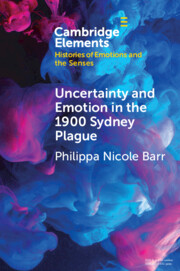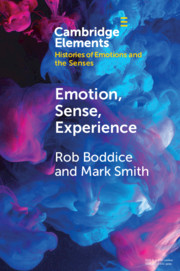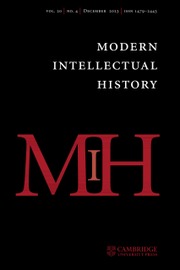Uncertainty and Emotion in the 1900 Sydney Plague
When the third global plague pandemic reached Sydney in 1900, theories regarding the ecology and biology of disease transmission were transforming. Changing understandings led to conflicts over the appropriate response. Medical and government authorities employed symbols like dirt to address gaps in knowledge. They used these symbols strategically to compel emotional responses and to advocate for specific political and social interventions, authorising institutional actions to shape social identity and the city in preparation for Australia's 1901 Federation. Through theoretical and historical analysis, this Element argues that disgust and aversion were effectively mobilised to legitimise these actions. As an intervention in contemporary debates about the impact of knowledge on emotion and affect, it presents a case for the plasticity of emotions like disgust, and for how both emotion and affect can change with new medical information.
Reviews & endorsements
'… if, like me, you are inclined to evolutionary psychology's explanations of our inner lives, then this is well worth the short time it will take to read it. I shall certainly spend much more time thinking about it.' Derek Gatherer, The British Society for Literature and Science
'This book is an excellent example of why a History of Emotions and the Senses is important. It is further a poignant example of the plasticity of affect and emotion amidst collective anxieties, lingering temporalities, and perceived threats to public safety and ordered worlds.' Kristen Foley, Emotions: History, Culture, Society
'This book's careful analysis of human behaviour during the plague sets it apart from other social histories of imperial-era pandemics, making it an important addition to the historiography. Although deploying a highly theoretical approach, Barr has made this book accessible and appealing to a wide audience for its skilful and fascinating investigation into a timely subject.' Charmaine Robson, Australian Historical Studies
'As an entrée to the affective impact of disease in the Australian historical context, it has much to recommend it.' Peter Hobbins, Journal of Australian Studies
'… a detailed study of a truly frightening epidemic.' Richard Trembath, Australian Policy and History Network
'… thought-provoking … The book is of value to students, ranging from high school to undergraduate and postgraduate, and scholars from a variety of disciplines. It will be of relevance to anyone interested in the history and sociology of emotions and the senses, especially emotions, identity and state formation.' Abby McCutcheon, Emotions and Society
Product details
December 2023Adobe eBook Reader
9781108904148
0 pages
Not yet published - available from December 2023
Table of Contents
- 1. Introduction
- 2. Outbreak of plague at Sydney, 1900
- 3. The symbolism of dirt in discursive responses to plague
- 4. Development of a city
- 5. 'A maze of contradictory observations': medical eclecticism and changing understandings of disease causation
- 6. Transforming the atmosphere
- 7. Mediating affect
- Bibliography.




